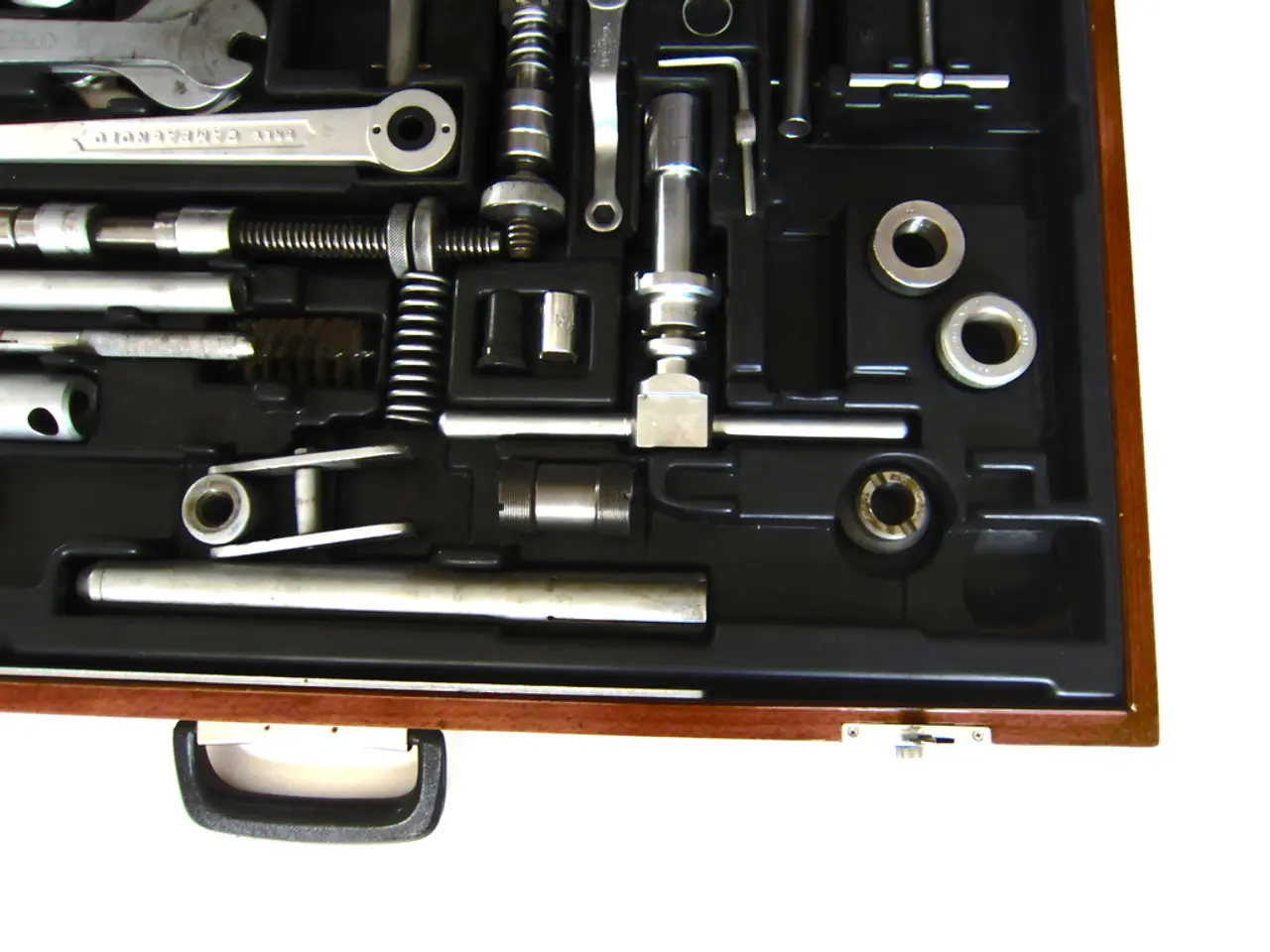Enhancing Productivity at Work: Top 6 Methods Revealed
In today's fast-paced business environment, work efficiency is paramount. It refers to the amount of work completed by an employee in a specific time period, and automating tasks can significantly help increase this efficiency by reducing the need for manual labor.
To create a productive, motivated, and well-optimized work environment, consider implementing the following strategies:
Setting SMART Goals
Setting Specific, Measurable, Achievable, Relevant, and Time-bound (SMART) goals enhances clarity and accountability, ensuring everyone knows what targets to meet.
Promoting Flexible Work Arrangements
Allowing employees to tailor their work hours or methods can boost morale and efficiency, making work more adaptable to individual needs and lifestyles.
Utilizing Technology and Automation
Embracing tools such as project management software, AI workflows, and employee time-tracking systems can streamline tasks, automate repetitive work, and enable data-driven adjustments.
Focusing on Single-Tasking
While multitasking may seem efficient, it often results in reduced productivity due to frequent task switching. Focusing on one task at a time can lead to better results.
Taking Regular Breaks
Regular breaks, such as the Pomodoro technique (25 minutes of focused work followed by a 5-minute break), can improve mental clarity and reduce burnout.
Delegating Tasks Strategically
Assigning responsibilities based on individual strengths can lead to better quality and efficiency. Delegating tasks helps improve work efficiency, especially for tasks that don't require creativity or expertise and tasks that the individual is not good at.
Continuously Monitoring and Optimizing Processes
Identifying bottlenecks through process mapping and employee feedback, measuring key performance indicators like turnaround time and error rates, and fostering a culture of continuous improvement are essential for ongoing process optimization.
Encouraging Employee Recognition and Appreciation
Recognizing and appreciating employees who feel valued experience higher productivity and engagement, leading to a more motivated and efficient workforce.
Productivity, related to the output an employee generates through work, is another crucial aspect of a well-optimized work environment. A highly productive employee is both effective and efficient.
Various tools can help automate tasks, such as Hootsuite, Buffer, Google Alerts, sales automation tools, Zapier, meeting scheduling apps, and invoice automation. Documenting processes can help identify bottlenecks and inefficiencies, making it easier to create process documentation that trains employees to be more efficient.
In the US, 11 million meetings take place every day. To reduce the amount of time employees spend in meetings, having an agenda for every meeting, only including people who absolutely need to attend, making meetings short, and implementing a no-meeting day can help.
Lastly, remember that efficiency means doing things right, while effectiveness occurs when one accomplishes a goal correctly. Computers are more efficient at automating repetitive tasks, such as data entry and sorting information. Project management tools like Hubstaff Tasks can help streamline communication, assign tasks to the most effective team members, share files easily, and use project templates.
Implementing these strategies can lead to a more productive, efficient, and well-optimized work environment suited to modern workplaces. Additionally, creating a time tracking policy, choosing a time tracking solution, getting employee buy-in, and starting to use time tracking yourself are key steps to implement time tracking and uncover time-wasting activities, motivating employees to spend their time more effectively.
- Embracing project management software like Hubstaff Tasks can help streamline communication, assign tasks efficiently, and use project templates, promoting productivity in the workplace.
- To provide a productive and efficient work environment, consider using tools like Hootsuite, Zapier, or Google Alerts for automating tasks, reducing the need for manual labor.
- In addition to automation, implementing strategies such as setting SMART goals, promoting flexible work arrangements, and taking regular breaks can boost employee productivity and well-being.
- Encouraging employees to adopt a culture of continuous improvement and monitoring processes can lead to ongoing optimization, ultimately enhancing overall workplace productivity.
- By focusing on single-tasking, employees can avoid the pitfalls of multitasking and improve their productivity levels in a fast-paced business environment.
- An effective use of time tracking tools like Hubstaff, not only in the workplace but also in personal life, can help identify time-wasting activities, motivating individuals to spend their time more effectively.
- In today's workplace, embracing modern tools, approaches, and understanding the difference between efficiency and effectiveness can contribute to improved productivity, workplace wellness, and overall career growth.




